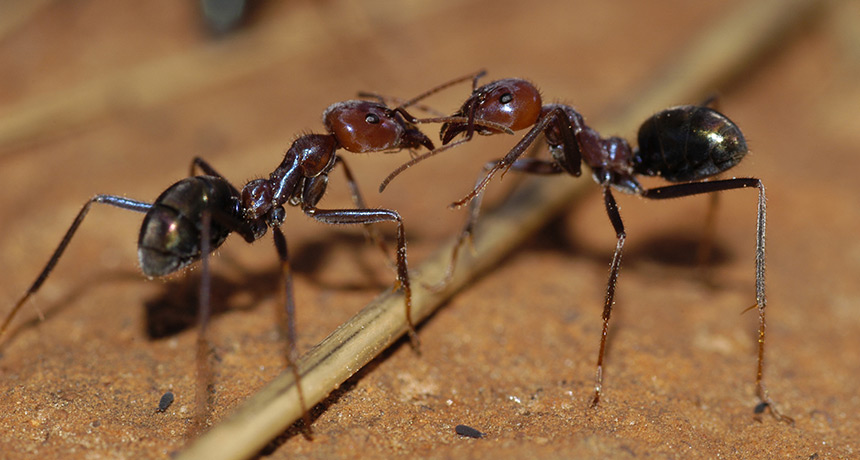Ants’ antennae both send and receive chemical signals

Ant antennae don’t just receive chemical signals — they send them, too.
Colonies of ants communicate through chemical cues produced all over their bodies. Studies have shown that ants use their antennae to identify their own nest-mates and potential invaders. But antennae also produce the key compounds that ants use to tell friend from foe, researchers in Australia report March 30 in the Proceedings of the Royal Society B.
Antennae from Australian meat ants, Iridomyrmex purpureus, contained a different chemical cocktail than those found on ants’ heads, legs or abdomens, the team found. When a worker ant’s antennae were removed or dipped in a solution that washed away signaling chemicals, ants from a different colony couldn’t identify the intruder. The unaltered ants swiped the invader down with their own antennae, and then acted as though the imposter was one of their own.